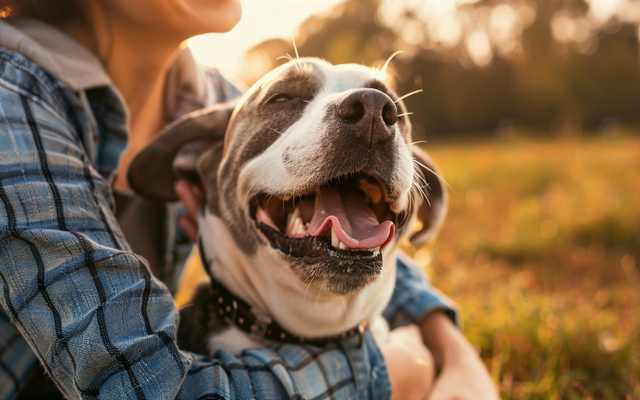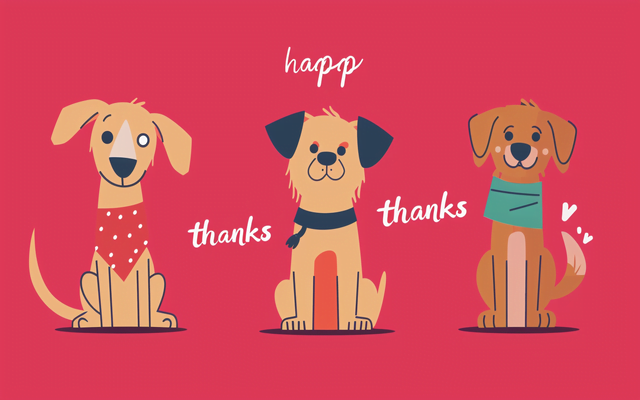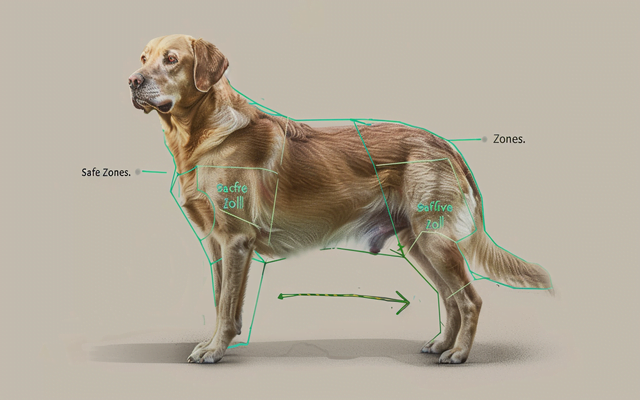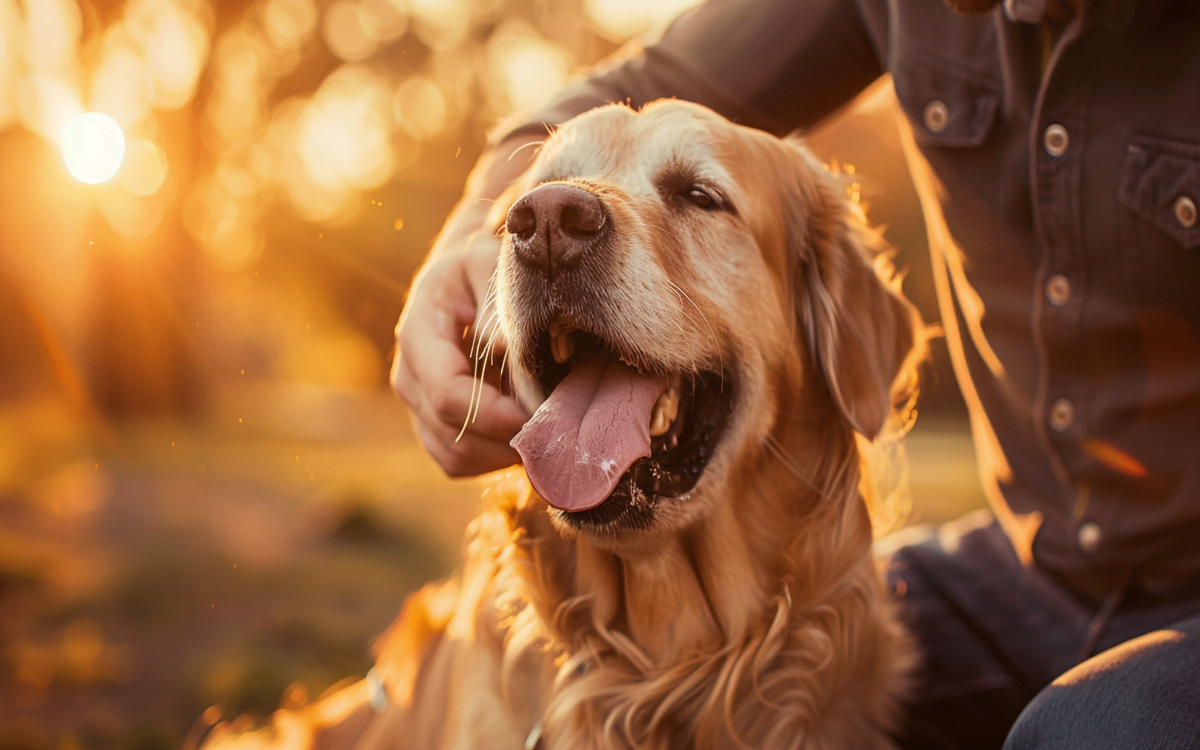Picture this: You come home after a long day, and your furry best friend greets you at the door with tail wags and excited little whimpers. You can’t help but grin as you reach down, and…wait, is the chest or behind the ears their favorite spot? Wouldn’t it be great to know exactly where your dog loves to be petted?
Understanding where (and where not) to pet your dog is more than just about those feel-good snuggles. It builds trust, deepens your connection, and helps you read their body language signals. After all, a misinterpretated ear scratch could put a damper on that happy reunion, right?
And hey, there’s even some science behind it! Studies show that petting releases feel-good hormones for both you and your pup. Talk about a cuddle puddle with serious benefits!

So, let’s dive into the wonderful world of doggy petting preferences. It turns out that understanding those subtle tail wags and happy sighs is key to becoming a petting pro!
Understanding Dog Body Language
It’s All in the Tail Wags and Ear Flicks
Forget about barking – dogs are masters of nonverbal communication! Learning their body language is like getting the secret cheat sheet to understanding their feelings about cuddles. Before approaching a dog, it’s essential to respect their space. Never chase or corner them, and let them come to you willingly. If a dog needs a break, ensure they have a way to walk away. For more in-depth tips on approaching fearful dogs, see the ASPCA’s guide “6 Tips for Winning Over Shy Dogs”. Here’s a breakdown of some common signals:
- Happy Dance: A full-body tail wag, relaxed ears, and a soft, open mouth mean your pup is in pure petting bliss. Go for it!
- Hesitant Hello: A slow tail wag, slightly lowered ears, and maybe even a bit of lip licking suggest your dog is a little unsure. Start slow with a gentle chest rub and watch their reaction.
- “Please Leave Me Be”: A tucked tail, pinned-back ears, or a tense body mean it’s not petting time. It’s best to give your pup some space.

Beyond the Basics: Subtle Signs
Now, let’s get into the nitty-gritty! Here are some less obvious cues about how your dog feels about their petting session:
- Ear Flicks: Constant ear flicks can signal mild discomfort or overstimulation. Time to switch up the petting location!
- The Whale Eye: If you see the whites of your dog’s eyes while petting, take this as a signal to slow down or stop.
- Yawning: While sometimes just a sign of sleepiness, frequent yawning can also indicate stress or anxiety.
Best Places to Pet a Dog: Considering Breed Variations
Generally Safe Zones
Most dogs share some common petting preferences:
- Chest: Who doesn’t love a good chest rub? It’s a classic for a reason!
- Shoulders and Back: Gentle strokes or scratches along the shoulders and back are usually welcome and feel super relaxing for our pup pals.
- Base of the Tail: Many dogs enjoy a bit of a scratch at the base of the tail, but watch their body language closely. Some doggies find it too stimulating!

Breed Matters! A Petting Preferences Guide
Get ready, because this is where things get interesting! Your pup’s breed can actually give you clues about their ideal petting spots.
Breed Group Preferred Spots Areas to Approach with Caution Why?
Table: Dog Breeds & Their Petting Preferences
| Breed Group | Preferred Spots | Areas to Approach with Caution | Why? |
| Sporting Dogs (Labs, Retrievers, etc.) | Chest, back, sides | Ears, paws |
Energetic breeds may find focused ear or paw touching overstimulating.
|
| Working Dogs (Boxers, Dobermans, etc.) | Shoulders, base of tail | Belly, head |
Active and alert breeds might misinterpret touches on sensitive areas.
|
| Toy Breeds (Chihuahuas, Yorkies, etc.) | Gentle strokes on the back, behind ears | Sudden movements near the face |
Small breeds can be easily startled. Start slow and gentle.
|
Caution Zones: Where to Tread Lightly
Let’s talk about those spots most dogs prefer you avoid:
- Paws and Legs: Many dogs are protective of their paws. Let them initiate the paw-shake if they’re into it!
- Tail: Grabbing or pulling the tail is almost always a no-go. A gentle scratch at the base might be okay, but watch for body language cues.
- Belly: That belly roll might look inviting, but it’s often a sign of submission. Better to wait for them to actively seek belly rubs.
How to Pet a Dog Properly
Gaining Trust: The First Step to Happy Snuggles
Remember, petting should be a positive experience for both of you! Before diving in, focus on building trust:
- Offer a Hand: Extend a closed fist for your dog to sniff. Let them decide if they want to come closer for some cuddles.
- Treat Tosses: Let them dog decide if they want to come closer for some cuddles. Offer a Treat: Drop a dog training treat a short distance away to let your dog approach at their own pace. It shows you mean well! Learn about dog training food here” Dog Training Treats: Your 2024 Guide to the Best Choices“.
It’s All in the Technique
Now that your pup feels safe, let’s master these petting pointers:
- Gentle Touch: Use soft strokes or slow, light scratches in the direction of their fur. Avoid patting or rough petting, especially on the head.
- Start Safe: Begin with petting the chest, shoulders, or sides, and watch their reactions before venturing to other areas.
- Watch for Cues: Happy tail wags, relaxed ears, and your pup leaning into the pets mean you’re doing it right! Stiffening, pinned-back ears, or a tucked tail mean it’s time to back off.
Nervous Nellies: Short and Sweet
Some pups are just a little more sensitive or unsure about petting. Keep their sessions short, sweet, and focused on those safe zones. Ending on a positive note is key!
The Power of Consent
Did you know dogs can consent to petting? If your dog moves away, turns their head, or shows any hesitant body language, it’s their way of saying, “Thanks, but no thanks.” Respect their choice, and they’ll trust you even more!
Conclusion
So, there you have it! You’re now on your way to becoming a dog-petting pro. Remember, every pup is unique, and their body language is your guide to their perfect petting experience.
By respecting your dog’s boundaries and understanding their preferences, you’ll strengthen that incredible bond and create cuddle sessions filled with pure joy (for both of you!).
FAQs
How do I know if my dog is enjoying being petted?
Pay close attention to your dog’s body language. Signs of enjoyment include a relaxed body, wagging tail, soft eyes, leaning into your touch, and even gentle sighs or happy grunts. If your dog stiffens, pins their ears back, tucks their tail, or tries to move away, it’s best to give them some space.
Why does my dog not like to be petted on the head?
Many dogs dislike being petted on the head because it can feel overwhelming or even threatening, especially if done by a stranger. Start with safer spots like the chest or shoulders, and always let your dog come to you for head pats instead of reaching over them.
Can petting help socialize a shy or anxious dog?
Yes, petting can be a valuable tool in socializing shy or anxious dogs when done correctly. Start with short, gentle sessions in a calm environment. Focus on safe petting zones and always respect your dog’s boundaries. Positive experiences with petting can help build trust and reduce anxiety over time.
My dog seems to get overstimulated after too much petting. How can I help them calm down?
Recognize the signs of overstimulation, like ear flicking, yawning, or whale eye (showing the whites of the eyes). Shorten petting sessions, offer quiet time in a designated safe space, and use calming treats or toys to help them relax.
My dog twitches and kicks their leg when I scratch a certain spot. What does that mean?
That’s the involuntary “scratch reflex”! Dogs have a bundle of nerves that, when stimulated, triggers a leg-kicking response. It’s totally harmless and a fun quirk of canine anatomy!

My job is to make sure every fact is right and every article is a joy to read. I’m kind of like a dog trainer for information – I make it behave!


